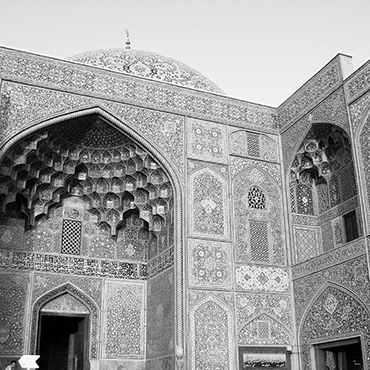IRAN SETS ITS SIGHTS ON ANTARCTICA...
Iran's leaders have long harbored aspirations of expanded regional, indeed global, influence, and against the backdrop of growing instability in the Mideast those ambitions are surfacing anew. In an address broadcast on Iranian state television, Rear Admiral Shahram Irani, the commander of the Iranian navy, announced that the Islamic Republic was staking a claim to the South Pole. "We have property rights in the South Pole," Irani is reported to have said. "We have [a] plan to raise our flag there and carry out military and scientific work."
What if any, implications would such an extension of Iranian foreign policy have? Expert opinion is mixed. Some military specialists have noted that "little lies between Iran's coast outside the Persian Gulf and the eastern hemisphere side of Antarctica," and the Islamic Republic could in theory "claim an interest" in the area similar to the way India, Australia and New Zealand have. However, they note, doing so would not confer tangible benefits to Tehran, with international law prohibiting any modern territorial claims on the continent. Others, however, worry that Iran's interest in the Antarctic reflects "future plans to try to expand its military presence and influence" and has the potential to "disrupt the rules-based order promoted by the West." (Fox News, February 15, 2024)
...AND EXPANDS ITS INFLUENCE IN THE WESTERN HEMISPHERE
Simultaneously, the Islamic Republic continues to make gains in the Americas, where weak regimes and leftist politics have provided the Iranian regime with ample opportunities to gain influence in recent years. "Iran's ambition is to have influence and military presence as it has in the Middle East," Joseph Humire of the Center for Secure Free Society explains in a recent, in-depth interview with the journal Dialogo-Americas. "Obviously we are talking about another part of the world, where getting to that level will take time, but all indications are that it is heading in that direction."
According to Humire, this infiltration has taken a variety of forms. "We are talking about Iranian cultural centers that have opened in various cities on the continent, as well as embassy programs that often include religious services to spread the principles of the Islamic Revolution," he notes. "In addition to the radio and television stations and channels operated in 16 countries, through which it promotes its ideology and foreign policy objectives; it has really woven an information network with which it attracts followers and networks of sympathizers." Moreover, according to him, "[u]nder the assumption of commercial exchanges, Iran has been infiltrating spies, subversive actors, and weapons" into various countries in the region.
For the Iranian regime, a foothold in Latin America makes sound strategic sense. "It has not only allowed [Iran] to evade U.S. and international sanctions, but also to confuse Latin American intelligence agencies that are unfamiliar with these covert programs of Tehran," Humire explains. In particular, he notes, the Islamic Republic has made major gains in the region through its relationships with countries like Nicaragua and Bolivia, where Iran's entrenchment has come with the acquiescence – indeed, the encouragement – of the national government. (Dialogo-Americas, February 7, 2024)
HOW MOSCOW-TEHRAN TIES KEEP TICKING
Both Iran and Russia are now under extensive sanctions, as the international community attempts to slow down the Iranian nuclear program and curtail the Kremlin's aggression against neighboring Ukraine. Naturally, therefore, Moscow and Tehran have colluded about ways to circumvent Western pressure. Take Russia's recent purchases of Iranian drones, for example. According to London's Telegraph newspaper, recent documents have revealed that Moscow inked a contract in 2022 for 6,000 Iranian-made Shahed drones for a sum of $1.75 billion – to be paid entirely in gold bullion.
The arrangement, experts say, is just one sign of an enduring strategic partnership between Moscow and Tehran – one that has deepened dramatically as a result of Russian President Vladimir Putin's war of choice against Ukraine. "The relationship is clearly intensifying and becoming more comprehensive," says Bryan Clark, a former special assistant to the U.S. Chief of Naval Operations who is now a scholar at the Hudson Institute. "Not only has Russia been paying with gold bullion to Iran to give them these Shahad-136 drones, Iran has also been building them in Russia at Russian facilities, so they have a co-development agreement to build them. And then they also are transferring that technology to Russia, so Russia can begin to build them at scale in Russia." (Telegraph, February 7, 2024)
Want these sent to your inbox?
Subscribe
Iran Democracy Monitor No. 232
Related Categories:
Economic Sanctions; Public Diplomacy and Information Operations; Science and Technology; Antarctic; Iran; Latin America; Russia

